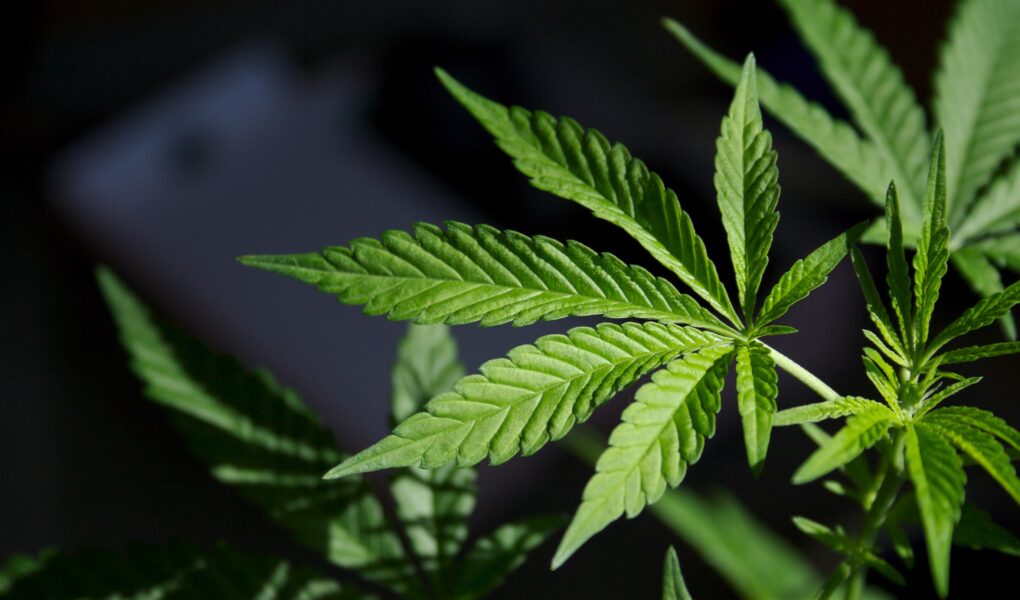Title: Decoding the Schedule: The Intricacies of Marijuana Classification
In the ever-evolving landscape of drug policy and societal attitudes, few substances have sparked as much debate as marijuana. Once relegated to the shadows of illegality and stigma, it is now at the forefront of a national conversation characterized by shifting perceptions and legislative reforms. At the heart of this discourse lies the concept of scheduling—an intricate system that categorizes drugs based on their potential for abuse, medical utility, and safety. As we delve into the complexities of marijuana’s classification as a Schedule I substance under the Controlled Substances Act, we will explore the implications of this designation, the historical underpinnings of drug scheduling, and the ongoing calls for reevaluation. Join us as we untangle the threads of policy, perception, and progress in the quest to understand what it truly means for marijuana to hold its place in the schedule.
Table of Contents
- Understanding the Scheduling of Marijuana: A Comprehensive Overview
- The Implications of Marijuanas Schedule for Legal and Medical Use
- Navigating the Legal Landscape: Advocacy and Policy Recommendations
- Future Perspectives: Rethinking Marijuana Classification in a Changing Society
- Q&A
- To Conclude
Understanding the Scheduling of Marijuana: A Comprehensive Overview
The classification of marijuana is a topic of significant debate and complexity, rooted in historical, legal, and societal contexts. In the United States, marijuana is classified as a Schedule I substance under the Controlled Substances Act. This designation implies that the drug is considered to have a high potential for abuse, lacks accepted medical use, and is not safe for use even under medical supervision. Such a classification places it alongside other substances like heroin and ecstasy, making research, access, and regulation particularly challenging. The implications of this scheduling affect not only the legal landscape but also public perception and healthcare policies.
Understanding the implications of this classification necessitates a closer look at the criteria used for scheduling substances. These include:
- Potential for Abuse: Evaluating how likely a substance is to be abused compared to others.
- Medical Use: Determining if the substance has accepted medical applications.
- Safety: Assessing risks involved in using the substance under medical supervision.
Given the evolving landscape surrounding marijuana legislation, many states have moved to legalize it for medicinal and recreational purposes, challenging federal scheduling. In a bid to reassess its status, there have been calls from various advocates and health professionals to reclassify marijuana to a lower schedule or even remove it from scheduling altogether. This dynamic interplay between state and federal laws continues to shape the conversation around marijuana’s place in society.
The Implications of Marijuanas Schedule for Legal and Medical Use
The classification of marijuana as a Schedule I substance has far-reaching implications for both its legal and medical use. This scheduling denotes that marijuana is considered to have a high potential for abuse and no accepted medical use, which hinders research, limits access for patients, and creates a complex legal landscape. As such, many individuals seeking therapeutic benefits find themselves navigating a maze of regulations, with access often determined by state laws rather than a unified federal approach. This dichotomy creates disparities in treatment options, with some patients benefiting from medical marijuana in states where it’s legalized while others are left without support in jurisdictions that maintain prohibitive stances.
Furthermore, the Schedule I classification perpetuates stigma surrounding marijuana use, impacting its acceptance within the medical community and society at large. This stigma can lead to misunderstandings regarding the safety and efficacy of marijuana for various health conditions. To further illustrate the effects of scheduling on medical research and access, consider the following table:
| Aspect | Implications |
|---|---|
| Research Opportunities | Lack of funding and limited studies on marijuana’s medical benefits |
| Patient Access | Inconsistent availability based on state laws |
| Public Perception | Enduring stigma that complicates conversations about use |
| Law Enforcement | Continued criminalization in states without legalization |
Navigating the Legal Landscape: Advocacy and Policy Recommendations
As the conversation surrounding marijuana evolves, it is crucial to understand the implications of its current scheduling under federal law, which affects various stakeholders including patients, businesses, and lawmakers. Advocacy groups are pressing for reforms that would allow for greater access to cannabis for medicinal and recreational use. It is essential that policymakers consider the following recommendations to facilitate a more equitable and informed approach to marijuana legislation:
- Decriminalization: Removing penalties associated with possession and use to reduce the burden on the legal system.
- Rescheduling: Reclassifying marijuana to enable research and therapeutic applications, paralleling its potential with other substances.
- Educational Initiatives: Implementing programs that inform the public about the benefits and risks of marijuana use.
- Industry Regulation: Establishing clear guidelines for the production, distribution, and sale of cannabis to protect consumers and ensure safety.
By actively engaging in policy discourse, stakeholders can advocate for changes that align with emerging scientific evidence and societal needs. A collaborative approach involving lawmakers, health professionals, and community members is crucial for creating a framework that encompasses the diverse perspectives surrounding cannabis. Below is a summary of key advocacy positions that can drive meaningful policy reform:
| Position | Description |
|---|---|
| Patient Access | Ensure that patients have unobstructed access to medicinal marijuana therapies. |
| Social Justice | Address the racial disparities in marijuana-related arrests and sentencing. |
| Economic Opportunity | Support minority-owned cannabis businesses through grants and resources. |
| Public Health | Promote research funding to ascertain the long-term effects of cannabis use. |
Future Perspectives: Rethinking Marijuana Classification in a Changing Society
The ongoing evolution of societal attitudes towards marijuana necessitates a critical reevaluation of its classification. As more jurisdictions move towards legalization and decriminalization, it becomes imperative to ask whether the current scheduling accurately reflects the substance’s risk profile and therapeutic potential. Consider the following factors driving this shift:
- Medical Research Advancements: Numerous studies demonstrate marijuana’s efficacy in treating chronic pain, epilepsy, and mental health disorders. These findings challenge its categorization as a purely harmful substance.
- Economic Considerations: The legal cannabis industry is booming, generating millions in tax revenues and job opportunities. The financial benefits of legalization prompt lawmakers to reconsider outdated classifications.
- Social Justice Movements: Disparities in marijuana-related arrests disproportionately impact marginalized communities. Reassessing marijuana’s classification can pave the way for restorative justice initiatives.
To visualize the movement towards a more informed classification system, a comparison illustrates the disparities among substances currently scheduled:
| Substance | Schedule | Therapeutic Use | Risk Level |
|---|---|---|---|
| Marijuana | Schedule I | Increasing Evidence | Moderate |
| Heroin | Schedule I | None | High |
| Cocaine | Schedule II | Limited | High |
| Oxycodone | Schedule II | Medical | High |
As society continues to reassess its values, a paradigm shift in marijuana classification could not only align our laws with emerging scientific knowledge but also enhance public health and equity. Addressing these areas head-on is crucial for a comprehensive approach to drug policy in a modern context.
Q&A
Q&A: Understanding Marijuana’s Classification as a Schedule Substance
Q: What does it mean for marijuana to be classified as a Schedule substance?
A: The classification of marijuana as a Schedule substance primarily refers to its placement under the Controlled Substances Act in the United States. Specifically, Schedule I substances are considered to have a high potential for abuse, no accepted medical use, and a lack of accepted safety for use under medical supervision. This classification has significant implications for research, law enforcement, and public perception.
Q: Why is marijuana classified as Schedule I when many states have legalized it?
A: The disconnect between federal classification and state legalization stems from differing views on marijuana’s safety and efficacy. While numerous states have legalized recreational and medicinal marijuana, the federal government maintains its Schedule I classification, citing concerns about potential misuse and health risks. This creates a complex legal landscape where state laws can diverge sharply from federal regulations.
Q: What are the implications of marijuana’s Schedule I status for scientific research?
A: Being classified as a Schedule I substance poses significant barriers to research on marijuana. Researchers face strict regulations and difficulties in obtaining the necessary licenses and substances for study. This has historically limited the scope and scale of scientific investigations, resulting in a knowledge gap regarding its effects, potential medicinal benefits, and risks, which persists even as public interest in cannabis continues to grow.
Q: Are there any efforts to change marijuana’s classification?
A: Yes, there are ongoing efforts from various stakeholders, including politicians, advocacy groups, and medical professionals, to reclassify marijuana. Proposals range from moving it to a lower Schedule or removing it from the controlled substances list altogether. Legislative action, public opinion, and evolving scientific knowledge could influence future decisions regarding its classification in the coming years.
Q: How does international law view marijuana in comparison to U.S. law?
A: Internationally, the classification of marijuana varies widely. Some countries have decriminalized or fully legalized cannabis for both medicinal and recreational use, while others maintain strict prohibitions. The United Nations has also debated its status, reflecting changing attitudes globally. while U.S. law can serve as a benchmark, the international landscape reveals a patchwork of regulations and beliefs surrounding marijuana.
Q: What role do public opinions and societal views play in the classification debate?
A: Public opinion plays a critical role in shaping the discussion surrounding marijuana’s classification. Growing acceptance and support for legalization in various American demographics, coupled with advocacy for its medicinal benefits, has prompted lawmakers to reconsider the existing legal framework. Changing societal views can create pressure on policymakers to address inconsistencies between federal law and the will of the people.
Q: what does the future hold for marijuana’s classification?
A: The future of marijuana’s classification remains uncertain but ripe for evolution. As scientific research expands, public attitudes shift, and advocacy efforts intensify, the potential for reform in federal marijuana policy grows. The ongoing dialogue surrounding its status reflects broader changes in social, legal, and health-related contexts, pointing toward a landscape that may one day embrace a more nuanced understanding of cannabis use.
To Conclude
the classification of marijuana within the schedules of controlled substances offers a nuanced glimpse into the ongoing debates surrounding drug policy, healthcare, and social justice. As we navigate this complex landscape, it becomes evident that the implications of such classifications extend far beyond legal texts, touching the lives of individuals and communities across the globe. Whether seen as a therapeutic ally or a legal obstacle, marijuana remains a potent symbol of the evolving perceptions of drug use and regulation. As society continues to grapple with these issues, the conversation will undoubtedly shift, inviting new perspectives and challenging existing norms. Ultimately, the question may not just be where marijuana fits within the schedules, but how we can best understand and reform our approach to this multifaceted substance in an ever-changing world.



